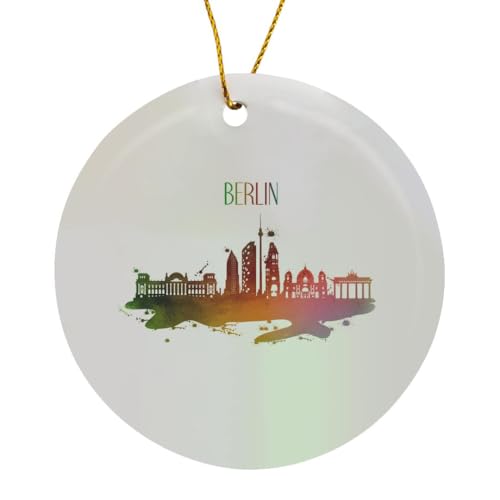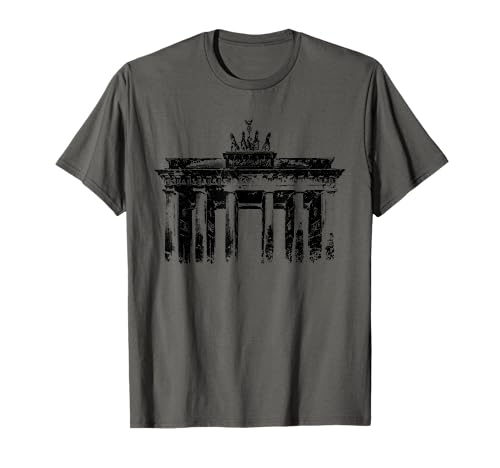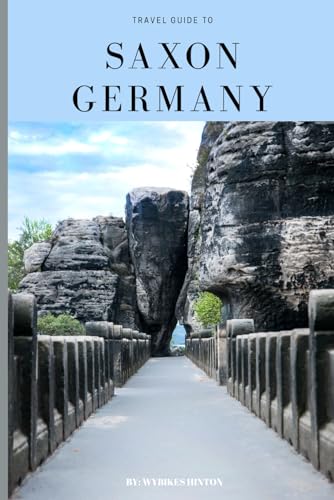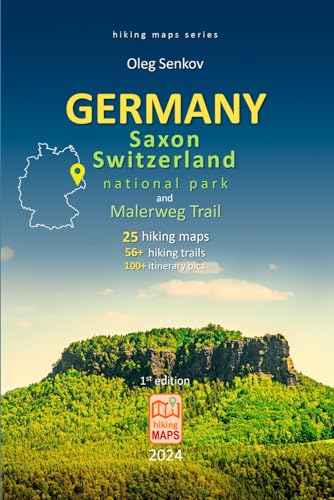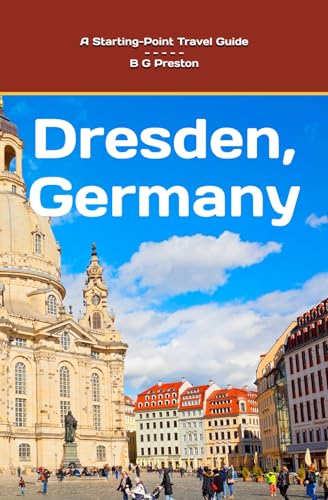The Allure of the Open Road
A road trip through Germany offers an exceptional opportunity to experience the country’s diverse cultural landscapes, particularly when traversing the distance from Berlin to Bavaria. This journey not only highlights the contrasting urban ambiance of Berlin, characterized by its vibrant arts scene and modern history, but also reveals the serene beauty and traditional charm of Bavaria, with its picturesque villages and captivating countryside.

Berlin, the capital city, stands as a testament to Germany’s dynamic history, showcasing a blend of avant-garde architecture, historical landmarks, and a multicultural atmosphere. As one explores the city, the influences of various cultures become apparent, ranging from the remnants of the Berlin Wall to the lively neighborhoods that celebrate global diversity. This urban experience is richly layered, enticing travelers to engage with local cuisine, art, and music, which present a modern and eclectic contrast to other regions of Germany.
In stark contrast, Bavaria invites visitors into a world steeped in tradition, where rustic landscapes, fairy-tale castles, and hearty culinary delights take center stage. The lush green hills and charming towns, such as Füssen and Garmisch-Partenkirchen, exemplify the tranquility and historical richness that Bavaria has to offer. Festivals celebrating local customs, along with its famous beer gardens, enhance the allure of this region, drawing travelers eager to connect with Germany’s cultural heritage.
As such, embarking on a road trip from Berlin to Bavaria not only provides breathtaking scenic views but also immerses road trippers in a tapestry of contrasting traditions and lifestyles. This adventure promises a wealth of experiences that enrich the journey, making it an enticing exploration of Germany’s cultural contrasts. Each mile traveled offers a deeper understanding of the nation’s heritage, ensuring that every traveler leaves with lasting memories shaped by the road less traveled.
Setting off from Berlin: The Urban Vibes
Berlin, the capital of Germany, stands as a dynamic representation of contemporary urban culture and historical significance, making it an ideal starting point for anyone looking to explore the cultural contrasts of the country. The city is renowned for its vibrant arts scene, bustling nightlife, and a rich tapestry of history that captivates both locals and tourists alike.
One cannot embark on a journey through Berlin without visiting the iconic Brandenburg Gate. This neoclassical monument, once a symbol of division during the Cold War, now represents unity and freedom, echoing the city’s resilience. Close by, the Reichstag Building, with its striking glass dome, provides panoramic views of the city, further enriching the urban experience.
The East Side Gallery, a section of the Berlin Wall adorned with murals and street art, offers deep insights into the city’s historical narrative. This open-air gallery serves as a canvas for artists from around the world, reflecting the themes of love, peace, and the legacy of division. As visitors walk along this stretch, they are not only witnessing art, but also experiencing the stories of a city that has transformed remarkably over the decades.
Additionally, Museum Island, a UNESCO World Heritage site, houses some of the world’s most important cultural institutions. The five museums showcase treasures from antiquity to the 19th century, allowing visitors to immerse themselves in art, history, and archaeology. Each museum presents a unique glimpse into Berlin’s diverse cultural landscape.
As the road trip begins, it is essential to embrace the essence of Berlin as a melting pot of cultures and ideas. The city’s unique blend of tradition and modernity sets the tone for a journey filled with diverse cultural experiences as travelers head toward Bavaria and beyond.
The Transition to Brandenburg: Nature Meets History
The journey from Berlin to Brandenburg marks a significant transition from the vibrant urban landscape of Germany’s capital to the serene and picturesque countryside. As travelers leave the bustling streets of Berlin behind, they are greeted by an entirely different scenery that is characterized by expansive forests, shimmering lakes, and a rich historical tapestry. Brandenburg, known for its breathtaking natural beauty, offers a refreshing escape into the tranquility of rural life.
One of the highlights of this journey is the remarkable interplay between the natural environment and historical landmarks. As one navigates through the region, the vast woods and idyllic lakes serve as a backdrop to the impressive Sanssouci Palace, a UNESCO World Heritage site nestled on the outskirts of Potsdam. This stunning rococo palace, once the summer residence of Frederick the Great, exemplifies how nature and history coalesce in Brandenburg. Visitors often find themselves wandering through meticulously manicured gardens that reflect the artistic vision of the 18th century while immersed in the calming ambiance of the surrounding green spaces.
The transformation in pace as travelers move from Berlin to Brandenburg allows for a more introspective journey, where one can appreciate not only the lush landscapes but also the historical significance embedded within them. The region is dotted with quaint villages and historic sites, each telling its unique story and inviting exploration. Lakes such as the Schwielowsee and the Müggelsee provide opportunities for outdoor activities, ranging from leisurely boat rides to invigorating hikes along scenic trails.
Ultimately, this section of the road trip from Berlin to Bavaria encapsulates the charm of Brandenburg, illustrating how nature and history can seamlessly intertwine. This experience highlights the contrast between urban and rural environments in Germany, enriching the overall journey and inviting travelers to immerse themselves in the cultural heritage of this enchanting region.
Saxony: Culture and Craftsmanship
Saxony, a region steeped in rich cultural heritage, is renowned for its exceptional craftsmanship and vibrant artistic community. One of the most captivating cities in this area is Dresden, which boasts stunning architecture and a deeply rooted history. The reconstruction of the Frauenkirche, a baroque church that was destroyed during World War II, demonstrates the Renaissance spirit of the city and its commitment to preserving artistic legacies. Visitors can also explore the Zwinger Palace, a masterpiece of Rococo architecture that houses the collections of the Old Masters Gallery, showcasing Saxony’s historical significance in the art world.
Leipzig, another gem located in Saxony, is often referred to as the city of music and arts. This dynamic city has produced illustrious composers such as Johann Sebastian Bach and Felix Mendelssohn, whose influences continue to resonate today. The Gewandhaus Orchestra and the Leipzig Opera offer performances that are celebrated both nationally and internationally, making the city a hub for music lovers. Additionally, the vibrant atmosphere of the Leipzig Cotton Mill illustrates the region’s transition from industrial roots to contemporary artistic expression, providing a platform for local artisans and creatives.
The traditional crafts of Saxony further complement its cultural landscape. The region is famous for its porcelain production, particularly the Meissen Porcelain, which has been meticulously handcrafted since the 18th century. Artisans employ time-honored techniques that have been passed down through generations, ensuring that their craft remains unparalleled. From intricate figurines to elegant dinnerware, these masterpieces reflect the dedication and precision of local craftsmen. Furthermore, the presence of numerous craft fairs and workshops allows visitors to engage with artisans and appreciate the skills involved in traditional craftsmanship, effectively illustrating the cultural depth and artistic heritage that Saxony embodies.
Bavaria: The Heart of German Traditions
Bavaria, the largest and one of the most distinctive states in Germany, is synonymous with rich traditions and vibrant culture. Known for its picturesque landscapes, fairy-tale castles such as Neuschwanstein and Hohenzollern, and its deep-rooted customs, the region provides an enchanting experience that embodies the essence of German heritage. One of the defining aspects of Bavarian culture is its folklore, which includes a wealth of tales, myths, and legends, often centered around local characters and historical events. These stories are not only a source of pride but also serve as a conduit for community bonding, celebrated through events, festivals, and local gatherings.
Beer culture is another cornerstone of Bavarian life, with the region being home to some of the world’s best breweries. Beer gardens, a staple of Bavarian social life, provide an opportunity for locals and visitors alike to enjoy the unique beverages paired with traditional cuisine. The annual Oktoberfest, held in Munich, embodies this love for beer and showcases an exhilarating array of local brews along with traditional food such as pretzels, sausages, and roasted chicken. This legendary festival attracts millions of visitors from around the globe, eager to partake in the festivities that highlight Bavarian camaraderie and hospitality.
The charming towns of Nuremberg and Rothenburg ob der Tauber offer glimpses into Bavaria’s storied past. Nuremberg, famous for its historical significance and beautiful medieval architecture, has played a pivotal role in shaping the region’s identity. Alternatively, Rothenburg ob der Tauber, often described as a ‘living fairy tale,’ captivates with its well-preserved streets, quaint shops, and stunning views that evoke nostalgia for times gone by. Together, these elements contribute to an experience rich in history, tradition, and cultural contrast that truly defines Bavaria as the heart of German traditions.
Culinary Delights: A Taste of Germany’s Regions
The culinary landscape of Germany is as diverse as its culture, reflecting the distinct regions and histories that shape its identity. A road trip through Germany from Berlin to Bavaria offers an opportunity to experience this vibrant culinary tapestry firsthand, showcasing unique flavors and regional specialties that celebrate the country’s rich traditions. Each region boasts its own iconic dishes, providing travelers with an extensive range of choices that highlight local ingredients and cooking techniques.
In Berlin, the street food scene is iconic, with currywurst being a must-try. This fast-food specialty, a sausage topped with a tangy curry ketchup and often served with fries, captures the multicultural essence of the city. Beyond currywurst, Berlin is also known for its diverse culinary offerings, influenced by various immigrant traditions, which contribute to the city’s dynamic food culture.

As travelers move south towards Bavaria, the culinary experience shifts dramatically. The region is famous for its hearty traditional dishes, most notably the schnitzel, a breaded and fried meat cutlet that has become synonymous with German comfort food. Additionally, Bavarian pretzels, known for their unique shape and flavor, are a popular treat, often enjoyed with a stein of locally brewed beer. The quality of the beer in Bavaria is unparalleled, as the region is home to many world-renowned breweries that produce a variety of styles, ensuring that each sip is a taste of local heritage.
Throughout the journey, each meal offers a deeper insight into the regional customs and the significance of food within German culture. Culinary delights not only satisfy the palate but also serve as a reminder of the cultural contrasts that make Germany a fascinating place to explore. The interplay of flavors, ingredients, and cooking methods encountered while traversing from Berlin to Bavaria truly encapsulates the essence of Germany’s rich culinary identity.
The Scenic Routes: Best Stops Along the Way
Embarking on a road trip from Berlin to Bavaria offers a unique opportunity to witness the dramatic cultural contrasts of Germany. The journey introduces travelers to a spectrum of landscapes, historic sites, and charming towns, making it essential to consider the scenic routes available. Opting for leisurely travel allows one to absorb the beauty of the surroundings and appreciate each destination along the way.
One highly recommended scenic route is the B2 highway, which meanders through picturesque towns like Potsdam and its stunning Sanssouci Palace. This UNESCO World Heritage Site, with its exquisite gardens and historical significance, serves as an ideal starting point for any traveler. As you continue along the B2, a stop in the quaint town of Wittenberg is essential. Here, Martin Luther famously initiated the Reformation, and visitors can explore significant landmarks that narrate this pivotal chapter in history.
As the journey progresses into Saxony, consider diverting to the enchanting landscape of the Saxon Switzerland National Park. This region boasts striking rock formations and lush forests, perfect for those who enjoy outdoor activities and breathtaking views. Travelers can also stop in the charming town of Dresden, known for its incredible architecture and vibrant cultural scene. The Frauenkirche and Zwinger Palace are two must-see attractions that exemplify the region’s rich history.
Another recommended stop is Nuremberg, famous for its medieval architecture and historical significance, particularly in relation to World War II. A stroll through the old town provides not only scenic views but also a glimpse into the city’s past. Exploring these hidden gems and picturesque towns emphasizes the importance of taking the time to enjoy the journey, transforming the road trip into an unforgettable experience filled with history and beauty.

Engaging with Local Culture: Festivals and Events
Germany’s diverse cultural landscape provides travelers with a myriad of festivals and events that offer profound insights into the country’s rich heritage. Engaging with these celebrations creates a unique opportunity for road trip enthusiasts to immerse themselves in the local vibes, reflecting the cultural contrasts between various regions. From the dynamic streets of Berlin to the enchanting countryside of Bavaria, each festival is a window into local traditions and lifestyle.
In Berlin, for instance, the city hosts vibrant street art festivals that celebrate urban creativity and artistic expression. These events draw both international and local artists, showcasing a fusion of modern art forms that resonate with the progressive spirit of the capital. Participating in these festivals not only enriches one’s understanding of contemporary German culture but also provides an exciting platform to interact with locals who share a passion for the arts. Attendees can stroll through open-air gallery exhibitions, enjoy live music, and even partake in workshops that encourage personal creativity.
Conversely, Bavaria’s cultural offerings often reflect a different, more traditional aspect of German life. The region is renowned for its folk celebrations, such as Oktoberfest and various regional fairs, which highlight traditional Bavarian customs, music, and cuisine. These festivals transport visitors to a bygone era where folk traditions have been preserved and celebrated. Guests can relish authentic food, listen to folk music, and partake in folk dances, creating an unforgettable connection with the region’s history and culture.
To maximize the experience of these events, it is advisable to plan ahead. Monitoring festival dates, local schedules, and transportation options can significantly enhance one’s travel itinerary. By thoughtfully incorporating these cultural festivities, travelers can gain a deeper appreciation of Germany’s rich tapestry, distinguishable by its regional contrasts, and leave with lasting memories of their road trip adventure.
Conclusion: Reflecting on Germany’s Cultural Mosaic
As we draw our exploration of Germany to a close, it becomes evident that this nation is a vibrant tapestry woven together by various cultural threads. From the bustling streets of Berlin, where history meets modernity, to the serene landscapes of Bavaria, with its rich traditions and folklore, this road trip has offered an immersive experience into the diverse cultural fabric of Germany. Throughout this journey, travelers have encountered the distinct characteristics that define each region, highlighting the unique customs, cuisines, and local traditions that permeate German life.
Travelers who ventured from the urban vibrancy of Berlin to the picturesque charm of Bavaria have witnessed firsthand how these cultural contrasts create a deeper understanding of the country. The architectural wonders of the capital starkly contrast with the idyllic countryside dotted with quaint villages, each location telling its own story. One can appreciate the dynamic evolution of German culture, which is continuously influenced by its historical events and the integration of global perspectives.
This road trip serves as a reminder of the importance of embracing cultural diversity. The interactions with locals, the tasting of region-specific specialties, and the exploration of historical landmarks enrich the travel experience. By venturing beyond the typical tourist sights and engaging with the communities, travelers can foster connections and gain insights into a way of life that may be starkly different from their own.
Therefore, we encourage readers to embark on their own road trip through Germany, immersing themselves in the myriad cultural experiences awaiting discovery. Each journey presents an opportunity to appreciate the complexities of Germany’s cultural mosaic and fosters a greater appreciation for the influences that shape not only the regions visited but also the broader narrative of the nation. Adventure beckons on the open road, where each turn may lead to unexpected delights and deeper connections to the rich heritage of Germany.

